Science
(www.olympiadsuccess.com)
Chapter 1: Nutrition in Plants
Class VII
Multiple Choice Questions
Question 1
Organisms which prepare food for themselves using simple naturally available raw materials are referred to as
(a) heterotrophs
(b) autotrophs
(c) parasites
(d) saprohytes
Answer
(b)
Question 2
In the absence of which of the following will photosynthesis not occur in leaves ?
(a) Guard cells
(b) Chlorophyll
(c) Vacuole
(d) Space between cells
Answer
(b)
Question 3
Which of the following statements is/are correct?
(i) All green plants prepare their own food
(ii) Most animals are autotrophs
(iii) Photosynthesis requires carbon dioxide
(iv) Oxygen is liberated during photosynthesis
Choose the correct answer from the options below:
(a) (i) and (iv)
(b) (ii) only
(c) (ii) and (iii)
(d) (i) and (ii)
Answer
(a)
Question 4
Pitcher plant traps insects because it :
(a) is a heterotroph
(b) grows in soils which lack in nitrogen
(c) does not have chlorophyll
(d) has a digestive system like human beings
Answer
(b)
Question 5
The term is used for the mode of nutrition in yeast, mushroom and bread-mould is
(a) autotrophic
(b) insectivorous
(c) saprophytic
(d) parasitic
Answer
(c)
Question 6
When we observe the lower surface of a leaf through a magnifying lens we see numerous small openings. Which of the following is the term given to such openings?
(a) Stomata
(b) Lamina
(c) Midrib
(d) Veins
Answer
(a)
Question 7
Two organisms are good friends and live together. One provides shelter, water, and nutrients while the other prepares and provides food . Such an association of organisms is termed as :
(a) autotrophs
(b) saprophytes
(c) symbiosis
(d) parasites
Answer
(d)
Question 8
Which of the following raw material is available in the air for Photosynthesis?
(a) Oxygen
(b) Carbon dioxide
(c) Nitrogen
(d) Hydrogen
Answer
(b)
Very Short Answer Questions
Question 9
Potato and ginger are both underground parts that store food. Where is the food prepared in these plants?
Answer
In both potato and ginger, the shoot system and leaves are above ground. Both the shoot system and the leaves prepare food through photosynthesis and transport it to the underground parts for storage.
Question 10
Photosynthesis requires chlorophyll, and a few other raw materials. Add the missing raw materials to the list given below:
Water, minerals, ____(a)_________, ____(b)__________.
Answer
(a) carbon dioxide
(b) Sunlight/light energy
Short Answer Questions
Question 11
A goat eats away all the leaves of a small plant (balsam). However, in a few days, new leaves could be seen sprouting in the plant again. How did the plant survive without leaves?
Answer
The plant survived on the food stored in the stem and roots.
Question 12
Unscramble the following to form terms related to modes of nutrition.
(i) RASPAEIT
(ii) ROPEHYTSAP
(iii) TOROPHAUT
(iv) SIBIOMSYS
Answer
(i) PARASITE
(ii) SAPROPHYTE
(iii) AUTOTROPH
(iv) SYMBIOSIS
Question 13
Nitrogen is an essential nutrient for plant growth. But farmers who cultivate pulse crops like green gram, bengal gram, black gram, etc. do not apply nitrogenous fertilizers during cultivation. Why?
Answer
Roots of pulses (leguminous plants) have a symbiotic association with a bacterium called Rhizobium which fixes nitrogen. Hence, farmers need not use nitrogenous fertilizers.
Question 14
Wheat dough if left in the open, after a few days, starts to emit a foul smell and becomes unfit for use. Give reason.
Answer
Carbohydrates in wheat dough encourage growth of yeast and other saprophytic fungi which break down carbohydrates, and emit a foul smell.
Question 15
Sunlight, chlorophyll, carbon dioxide, water and minerals are raw materials essential for photosynthesis. Do you know where they are available? Fill in the blanks with the appropriate raw materials.
(a) Available in the plant : _______________
(b) Available in the soil : _______________, _______________
(c) Available in the air : _______________
(d) Available during day : _______________
Answer
(a) chlorophyll
(b) water, minerals
(c) carbon dioxide
(d) sunlight
Question 16
Observe the diagram given in the figure below and label the following terms given in the box.
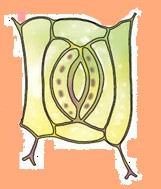
Answer
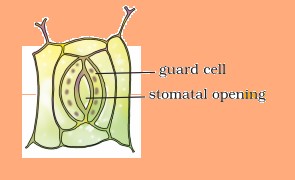
Question 17
Match the organisms given in Column I with their mode of nutrition given in Column II.
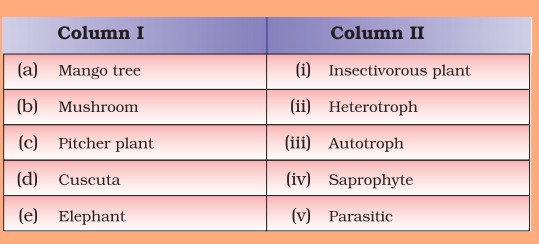
Answer
(a) (iii); (b) (iv); (c) (i); (d) (v); (e) (ii)
Question 18
Wild animals like tiger, wolf, lion and leopard do not eat plants. Does this mean that they can survive without plants? Can you provide a suitable explanation?
Answer
Yes, it is true that these animals do not eat plants. They hunt and eat herbivorous animals like gaur, zebra, deer, bison, giraffe, etc. which are dependent on plants for food. If there are no plants, herbivorous animals will not be able to survive in which case animals like tiger, wolf, lion and leopard will go hungry.
Question 19
Fill in the blanks of the paragraph given below with the words provided in the box.
chlorophyll, energy, food, carbon dioxide, water, photosynthesis
Note: A word can be used more than once.
Leaves have a green pigment called (a) which captures (b) from sunlight. This (c) is used in the process of (d) and along with other raw materials like (e) and (f) synthesize (g) .
Answer
(a) chlorophyll (b) energy (c) energy (d) photosynthesis (e) carbon dioxide
(f) water (g) food/carbohydrates
Question 20
Spot as many organisms as possible in the puzzle given in the figure 1.2 by encircling them as shown. Write the names on a sheet of paper and categorise them into autotrophs and heterotrophs. Classify the heterotrophs into herbivores, carnivores, omnivores and saprophytes.
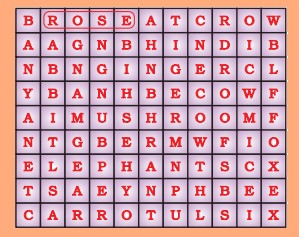
Fig 1.2
Answer
Number of organisms : 22
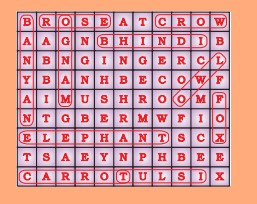
(Some examples are given. You may find the rest of the
organisms.)
Autotrophs – Rose, Mango, Bhindi, Carrot,
Banyan, Tulsi, Ginger, Yam
Heterotrophs – Elephant, Ant, Yeast, Tiger,
Mushroom, Fox, Mice, Owl, Cow,
Crow, Rabbit, Bee, Fish
Herbivores – Elephant, Cow, Rabbit, Bee
Carnivores – Fox, Tiger
Omnivores – Ant, Mice, Owl, Crow, Fish
Saprophytes – Mushroom, Yeast
Question 21
Can you give me a name?
Solve each of the following riddles by writing the name of the organism and its mode of nutrition. One riddle is solved to help you.
(a) I am tall but I cannot move. I am green and can prepare my own food. tree, autotroph
(b) I live in water; people keep me in an aquarium and feed me.
(c) I am small and I can fly. I disturb your sleep, bite you and suck your blood which is my food.
(d) I am white and soft. I grow well in the rainy season. Children pluck me from the ground and admire me. I absorb nutrients from decomposed dead parts of plants and animals in the soil.
Answer
(b) fish, heterotroph
(c) mosquito, parasite
(d) mushroom, saprophyte
Yearlong program for Olympiads preparation & to build necessary skills for future.
Explore More
Time to mark your calendar with the upcoming Olympiads exam schedule.
Explore More
Take your Olympiad preparation to next-level by taking LIVE Classes.
Explore More
Assess your performance by taking topic-wise and full length mock tests.
Explore More
Online tuitions for international compeitions like SASMO, SEAMO, etc for Grades 1-11.
Explore More